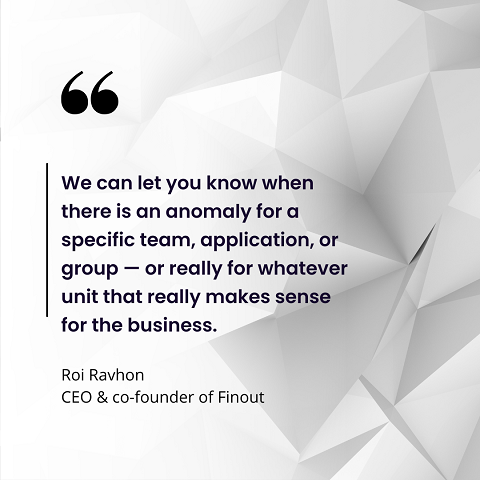Finout Boosts FinOps Cloud Cost Optimization with Anomaly Detection
No manager wants to be surprised by a cloud bill that is larger than expected at the end of the month. That's where Finout's anomaly detection comes into play.

Cloud computing can be a strategic enabler for an organization, but it can also come with unexpected costs ifCloudOps isn't actively managed.
On March 7, cloud cost observability startup Finout announced the launch of its anomaly detection capability, in an effort to help organizations quickly identify unexpected cloud consumption.
The startup, which was founded in 2021, raised $18.5 million in 2022 to help build out its platform, which includesFinOps dashboards to help organizations track cloud bills. A core element of the Finout platform is the MegaBill, which consolidates all of the cloud services an organization is using to provide better operational visibility.
With the anomaly detection capability, Finout is going a step further, helping organizations understand what normal consumption patterns are and then, with the help of advanced machine learning, helping identify when there is unexpected activity.

Ravhon-Finout
Finout will now provide its users with automatic alerts via email or Slack on cloud usage anomalies as well provide improved visibility for organizations to better understand what triggered the cost overrun.
"We can let you know when there is an anomaly for a specific team, application, or group — or really for whatever unit that really makes sense for the business," Roi Ravhon, CEO & co-founder of Finout, told ITPro Today.
Key Benefits of Finout's Anomaly Detection Capabilities for FinOps
According to Finout, the new anomaly detection capabilities bring a series of benefits for organizations, including:
Automatic alerts. The system will now provide automatic alerts for cost overruns to users via email or Slack.
MegaBill integration. The anomalies will all be tracked as part of the Finout MegaBill dashboard that provides a consolidated view of cloud costs.
Cloud-agnostic. Anomalies can be detected across any cloud provider service.
Cost control. The update provides organizations with improved control and visibility over cloud resources.
How Finout Anomaly Detection Works for FinOps
There are a variety of methods that Finout uses to get cloud utilization and cost information for a given organization.
At the most basic level, there is information that can come from the big cloud providers, including Amazon Web Services (AWS), Microsoft, and Google, according to Ravhon. For cloud-based software-as-a-service (SaaS) applications, there is often less visibility into cloud utilization at a granular level, he said. What Finout has done is developed a system that makes use of both publicly available APIs from providers as well as some reverse engineering to get better clarity into utilization.
Finout also uses an approach Ravhon referred to as "virtual tagging" to associate certain workloads or services with a particular application or group to provide better visibility into all the components and costs that a cloud service is consuming.
Over time, Finout develops a baseline of normal usage for a given service, with an understanding that there are fluctuating cloud compute pricing and usage for regular operations. The anomaly detection engine is able to identify when there is a deviation beyond the baseline.
Taking a Unit Economics Approach to FinOps
With the cloud, Ravhon argued that setting a strict budget to limit costs is not ideal.
"You don't want to close down your business because you go over your budget; you just need to deal with it," he said.
Rather than having a strict budget, Ravhon said organizations should understand the concept of unit economics for cloud computing. The basic idea behind unit economics is that an organization can measure and quantify the return on investment and utility that it receives from the resources it uses for cloud computing.
"The entire concept of budgets within SaaS companies I think is going to change in the next couple of years, and we're going to start measuring more by unit economics," he said.
About the Author
You May Also Like








.jpg?width=700&auto=webp&quality=80&disable=upscale)
